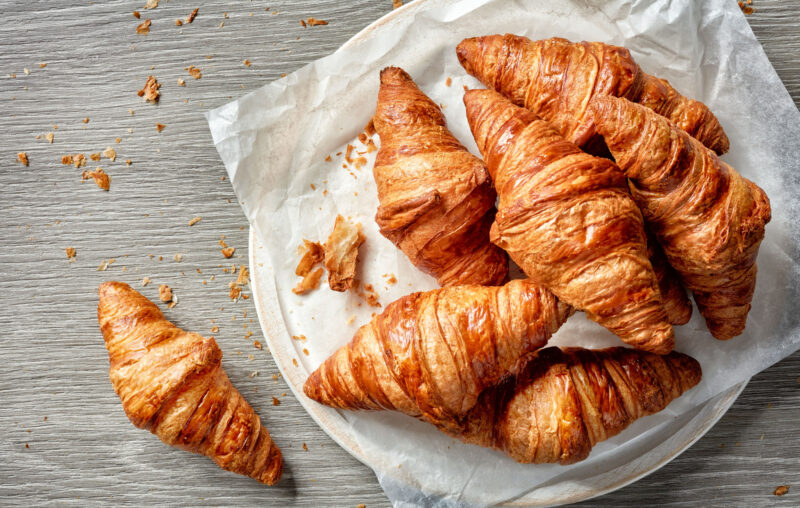Supply and Demand: As Straightforward as it Seems?

I’m in Holland at the moment, and the supply of outstanding croissants is astonishingly high. The price is even more astonishingly low. Even the crummiest (heh) generic grocery chain has warm croissants for about 40 cents each, displayed handsomely in large bins by the door. The phenomenon raises a question: Is our American demand for excellent pastries just so much lower than Europe’s that stateside supply commensurately matches an anemic demand? Or is demand itself a certain reflection of supply—an inversion of the familiar model that supply chases demand? Do consumers really get what they ask for, or do they, in fact, end up demanding what happens to be available?
The law of supply and demand, as traditionally understood, is of course a cornerstone of economic theory. It is also, by extension, a pillar of the classical liberal understanding of how societies spontaneously order the complex distribution of scarce resources that have alternative uses. And despite the often-bitter cavils from statists (who prefer to ignore price-signaling in favor of dirigiste expertise) the law really does explain much about how the world works. The law is elegant, just, and efficient. Yet this observation of croissants is a reminder that real life is thicker and messier than even the most elegant theories would have us believe.
While the basic utility of the theory cannot be seriously contested, there are some exceptions, such as Giffen/Veblen goods that make for interesting cocktail discussions. Adding another to the list is what might be called the “bubble” phenomenon: the supply-and-demand information flow is effectively bounded within a cultural and geographical frontier—an insulating bubble of sorts. Consumers, acting within this bubble, necessarily demand what is generally available, rather than demanding abstract products from producers who (so the theory would imply) assiduously leap to fill the unfilled demand.
Steve Jobs made this phenomenon quite clear, pointing out that people never knew they needed an iPad until he invented one—“a lot of times people don’t know what they want until you show it to them.” He literally created demand out of thin air; he was most emphatically not responding to consumer demand. Which brings us back to croissants: Americans, based on my sample size of four, seem to overwhelmingly appreciate fresh, warm, cheap croissants. We’re not philistines, after all. So why can’t you get them at home in the local 7-11? Because, paradoxically, there is not enough demand for them, which is itself because there is no ready supply—it’s a möbius of sorts. The same twisted logic explains why, in Holland, you see specialty shops with bags of American Cheetos and boxes of super-sweet breakfast cereals displayed in shop windows like exotic trophies—yet are faded by the sun for lack of full-scale, torrential demand.
So how would one get croissants into the kind of ready supplies enjoyed by Holland? It’s a bit of a pickle: I could open a bakery, I’m quite sure, and find a very loyal (and probably very small) fanbase. I doubt, however, the demand would bloom into the kind of levels required to sustain the production base enjoyed in Holland. It’s the entrepreneur’s dilemma—a kind of chicken-and-egg quandary that complicates the basic law of supply and demand. Consumers are in the driver seat, to be sure, helping steer resources to their most valued alternative uses. But they are also the hapless victims of their own experience-bounded bubbles—consuming only what is essentially familiar in the most immediate sense.
Of course, this experience-bounded bubble is always shifting and morphing (the basic heart of the supply and demand theory, after all). And as if to make the point especially clear, the concept of a croissant itself is the manifestation of a Viennese specialty item marking the end of the 1683 Ottoman siege. Legend has it that they were created by a lone baker to commemorate the Christian victory, a baker who (ironically enough) sought monopoly rights to bake the crescent-shaped buns to evoke the Ottoman Turkish crescent. Yet apparently this familiar historical gem is all bunk: the things just kind of showed up—made (possibly) by some obscure Austrian artillery officer in the 1830s.
And so it goes: Supply is a reflection of demand which is a reflection of supply—a house of mirrors bounded within the messy, beautiful, unpredictable kaleidoscope we call culture. So next time you’re in Holland, be sure to grab one of these flaky, intricately laminated confections (a better metaphor could hardly be had), and bite into the unpredictable spontaneous outgrowth of supply-and-demand.
And if I can just get Platte County, Missouri to grant me monopoly baking rights, you can grab one stateside as well. For only $14 a pop….










